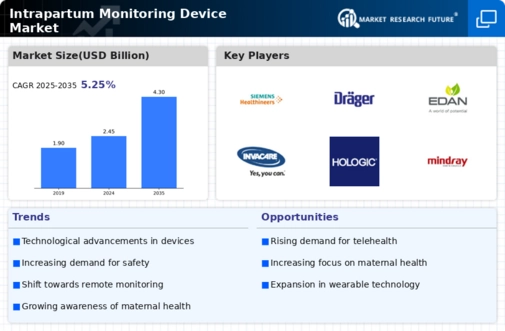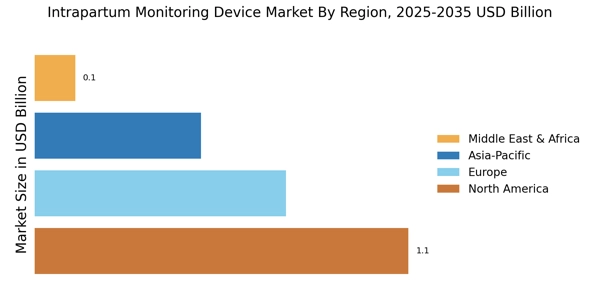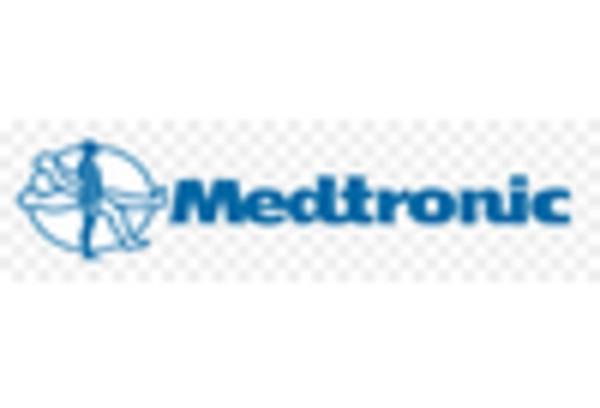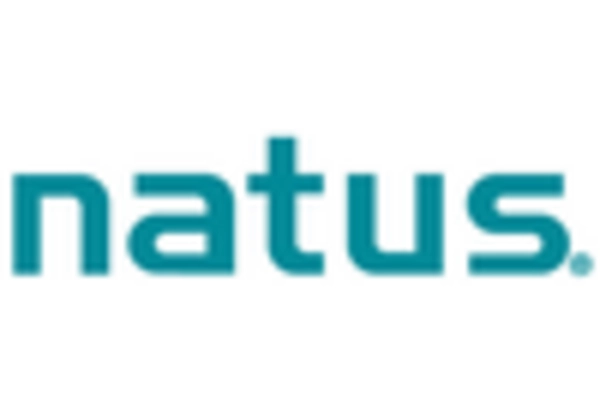Focus on Patient-Centric Solutions
There is a growing emphasis on patient-centric solutions within the Intrapartum Monitoring Device Market. Healthcare providers are increasingly prioritizing the comfort and experience of expectant mothers during labor. This shift is leading to the development of devices that are not only effective but also user-friendly and less invasive. Market data suggests that devices designed with patient comfort in mind have seen a 30% increase in adoption rates. Additionally, the incorporation of features such as mobile applications for real-time monitoring allows patients to engage more actively in their care. This trend towards patient-centricity is likely to continue, as healthcare systems recognize the importance of enhancing the overall birthing experience.
Regulatory Influence on Device Standards
The regulatory landscape plays a crucial role in shaping the Intrapartum Monitoring Device Market. Stringent regulations imposed by health authorities ensure that devices meet safety and efficacy standards, which can drive innovation and compliance among manufacturers. The introduction of new guidelines often leads to the development of enhanced monitoring devices that align with the latest clinical practices. For instance, recent updates in regulatory frameworks have prompted manufacturers to invest in research and development, resulting in a projected market growth rate of 15% over the next five years. This regulatory influence not only fosters competition but also encourages the adoption of best practices in the design and functionality of intrapartum monitoring devices.
Rising Birth Rates and Healthcare Demand
The Intrapartum Monitoring Device Market is significantly influenced by rising birth rates and the corresponding demand for effective healthcare solutions. As populations grow, particularly in developing regions, the need for reliable monitoring during labor becomes increasingly critical. Recent statistics indicate that birth rates have seen a modest increase, leading to a heightened demand for intrapartum monitoring devices. This trend is expected to drive market growth, with projections suggesting a compound annual growth rate of 12% over the next several years. The increasing number of births necessitates the implementation of advanced monitoring technologies to ensure the safety and health of both mothers and infants during labor.
Integration of Telemedicine in Intrapartum Care
The integration of telemedicine into the Intrapartum Monitoring Device Market is transforming how care is delivered during labor. Telehealth solutions enable remote monitoring of patients, allowing healthcare providers to assess fetal well-being without the need for constant physical presence. This approach not only enhances accessibility but also optimizes resource allocation in healthcare settings. Data indicates that the use of telemedicine in intrapartum care has increased by approximately 20% in recent years, reflecting a shift towards more flexible and responsive healthcare models. As telemedicine continues to evolve, it is likely to play a pivotal role in shaping the future of intrapartum monitoring, potentially improving outcomes for mothers and infants alike.
Technological Advancements in Intrapartum Monitoring
The Intrapartum Monitoring Device Market is experiencing a surge in technological advancements that enhance the accuracy and efficiency of fetal monitoring. Innovations such as wireless monitoring systems and advanced algorithms for data analysis are becoming increasingly prevalent. These technologies allow healthcare providers to monitor fetal heart rates and uterine contractions in real-time, leading to improved clinical outcomes. According to recent data, the adoption of these advanced devices has increased by approximately 25% over the past few years, indicating a strong market trend towards more sophisticated monitoring solutions. Furthermore, the integration of artificial intelligence in these devices is expected to revolutionize the industry, providing predictive analytics that could potentially reduce complications during labor.


















Leave a Comment